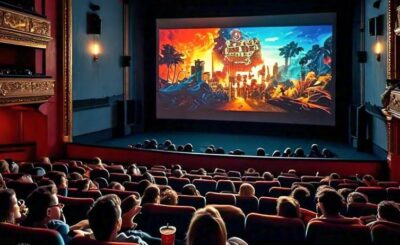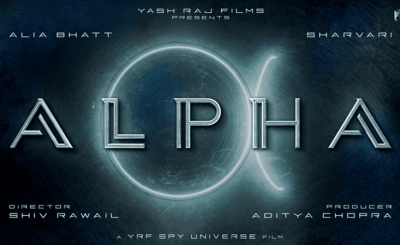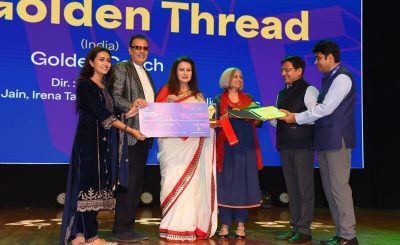
With her iconoclastic approach to filmmaking, the talented filmmaker Kit Farrell has embarked upon a challenging film project that is trying to capture the zeitgeist of the highly scientific area of transgenic research.
It may sound an abstract topic for a film to those who are used to conventional rules of filmmaking, but Ms. Farrell is determined to bring all the cinematic excitement to her production to keep audiences on the edge of their seats.
As filming is underway for this project, RMN Stars invited Kit Farrell to discuss about her upcoming film. Here’s what she explained in an exclusive interview with Rakesh Raman, the managing editor of RMN Stars.
1. As you have planned to make a feature film on transgenic research, what has inspired you to choose this subject?
I’ve always been passionate about science and art. The deeper I delve into transgenic research, the more I see it as a marriage of the two. To have the ability to imagine life in a completely new way and then go about creating it is awe-inspiring.
I have friends who have suffered debilitating spinal injuries as the result of accidents. To have the possibility of a cure would be incredible, which is what got me interested in stem cell research in the first place.
My documentary, Pandora’s Hope, touches on this topic in the context of a larger theme: the hidden side of paradise on the island of Kauai. It was thrilling to get footage of scientists doing proprietary work in this field. I just couldn’t stop thinking about the implications, which led me to my current project.
2. At what stage is this film project now?
We have secured 75% of the funding and filming is underway. We’re about half way through principal photography, but this is a documentary, and the subject matter unfolds in real time. We have to be flexible.
We are covering a variety of medical procedures involving inter-species stem cell implantation that are at various stages of completion. We have to be patient as the results unfold.
In the meantime, there are many social, moral, and ethical questions to explore. And, we are actively seeking more stories to cover. This is why we’ve put out a world-wide open call to scientists and patients involved in unusual research projects.
3. What kind of challenges do you foresee in the completion of this film?
There are enormous challenges, to be sure. Much of the film involves human interest stories. People are grappling with sometimes life-threatening conditions; scientists are exploring options sometimes for the first time. We’re dealing with serious legal, moral, and ethical decisions every day.
A lot of what is being done in labs around the world is secretive, whether due to ethical ambiguity or simply the financial impetus to protect proprietary information.
For example, if you could regenerate nerve endings, there’s a large market for that. So getting scientists to come forward is one obvious challenge, although there are a surprising number of open source proponents who are happy to share their information.
Also, some of our subjects have concerns about privacy, although there are also those who are willing to be pioneers, and in some cases guinea pigs, to advance the research.
Then there is the issue of keeping the entire production team moving in the same direction. Film is a collaborative project, which I love, but it has its own challenges. There are a lot of legal, contractual, content, and financial issues. And it all has to be managed in a timely manner – we want to get there first.
4. While the subject of your film is quite abstract, will there be enough consumers to pay for your movie to make it a viable venture?
While the philosophical issues surrounding genetic research and experimentation may be abstract, much of the actual work being done in the field is very concrete. And there’s no lack of drama in the personal stories of trial and tribulation.
The key for me is constructing a film that speaks to the audience in layman’s terms – not too technical – and that speaks to the deep religious, political, and social concerns raised by this work.
This is a very critical time in our civilization; scientists have the ability and potential to do great things, but they can also do great harm. In the quest to address disease, famine, climate change, and other pressing issues, scientists are ‘playing god’ with the genes of a variety of life forms.
What if we could continuously replace our aging organs with those grown inside animals? It seems far-fetched, but is it really?
If we continue to pollute the planet, we may need to change physiologically in order to survive. This might be accomplished through genetic engineering. We may need better filtration for our lungs, or to be able to breathe under water if we have to take to the sea again. Reality is filled with far-fetched examples; there are plenty of life forms that survive in extreme conditions on this planet. Humans may become one of them.
As I documented in Pandora’s Hope, the introduction of shark stem cells into the human jaw has been partially successful. The research is still in its infancy, so the jury is still out as to whether or not this will prove a successful therapeutic treatment.
As it stands, the subject’s teeth are both human-like and shark-like – pointy, sharp, and continuously regenerating. There’s work to be done, but what they’ve presently accomplished is just astonishing.
The concern about this type of experimentation is that irreversible genetic changes may be unleashed into the mainstream population, and what then? If we don’t want our future handed to us in ways we cannot control, it’s important to stay current about these issues.
5. How do you plan to distribute your film? What will be the role of digital media in the distribution of the film?
I’ll definitely submit it to film festivals to get some traction, and then I’ll seek traditional theatrical distribution. The object is to get the movie seen, no matter how. Social media plays a hugely important part in marketing and creating buzz for the project. It’s also an option for distribution. We’ll stay open to all possibilities.
6. What is your advice for indie filmmakers who are struggling to gain a foothold in the cutthroat entertainment market?
I can only speak to what works for me. I think it starts with commitment to a long term involvement. My team and I are living and breathing this project every day, and the process is lengthy. And that leads me to my second thought, which is that you have to be passionate about the content.
Perhaps that seems like a given, but there are days when you feel more like a researcher than a filmmaker, and you have to be okay with that. Lastly, this is a collaborative medium. So I try to surround myself with a great team of people who are as dedicated to the project as I am. You need a clear vision of intent, and as much as possible, everyone has to be on the same page.
Kit Farrell (pictured above) is a New York City based filmmaker, artist, and activist. She attended San Francisco State University on CSU Presidential Scholarship and graduated cum laude with a degree in Broadcast and Electronic Communication Arts. Kit’s short documentary film, Pandora’s Hope, exposes the hidden side of paradise on Kauai, delving into the complex worlds of agrochemical biotech, GMOs, missile defense, and genetic research. Pandora’s Hope is currently screening in film festivals around the world. Her next project, a feature documentary currently in production, explores the scientific, moral, and ethical implications of transgenic experimentation.
Photo courtesy: Kit Farrell / Sean Turi Photography



